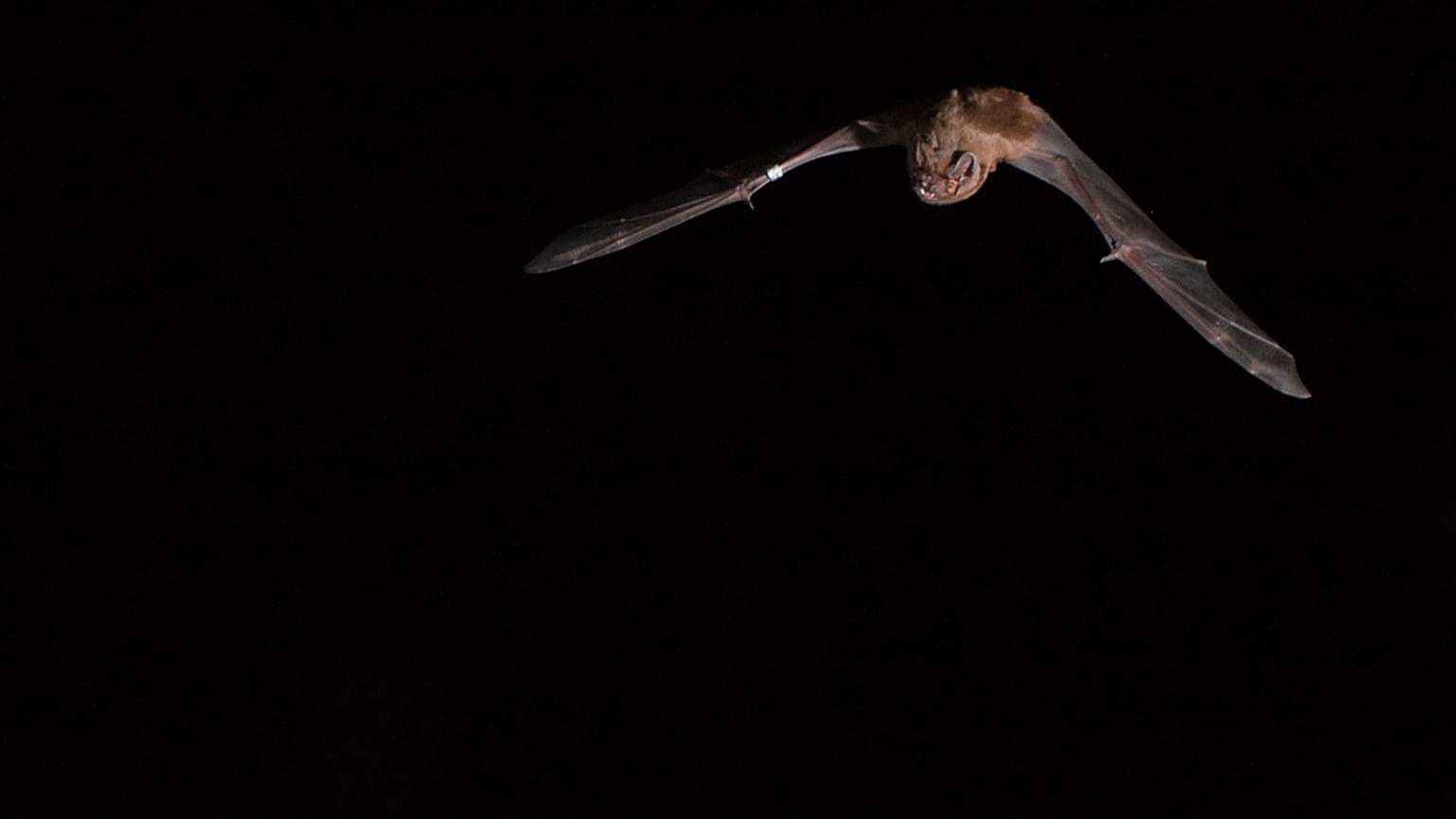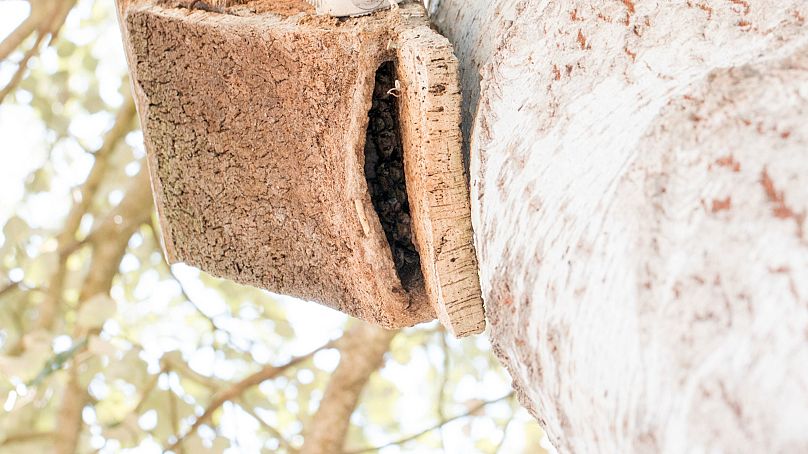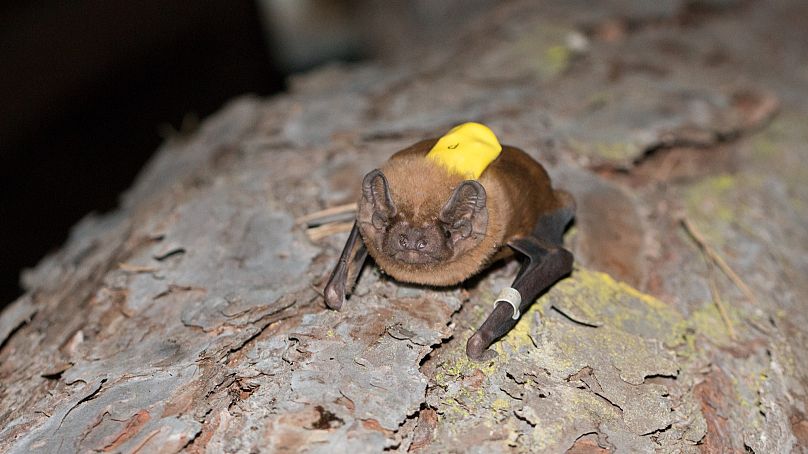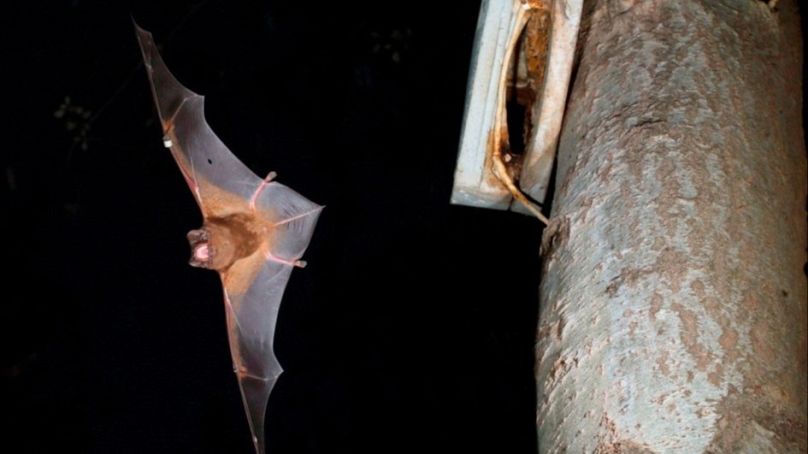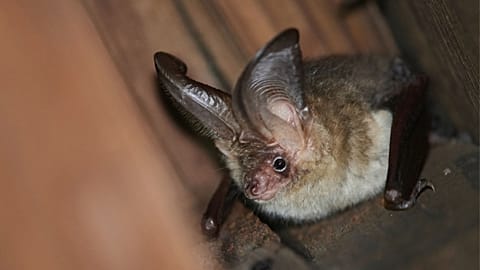Europe’s largest bat has impressive hunting behaviour, a new study shows.
Some species of European bats are known to attack birds as they migrate to Africa. However, they must trap them while in flight: a hard task for such small predators.
The behaviour has previously been a mystery to researchers, who were unsure of how the bats could pull off such a complicated manoeuvre.
But a new study, published in Science, offers a window into how these bats do it: with pictures and sounds to prove it.
The bats and the birds
Each year, billions of passerine birds migrate during the night from Europe to Africa. Travelling in large flocks, they’re an apt target for bats. Three echolocating bat species, including the greater noctule bat, are known to prey on these flocks.
These birds are travelling over long distances and at high altitudes. Capturing prey in these conditions is not an easy feat.
“It's not a very common hunting style and it had never been observed before,” says Ilias Foskolos, a postdoctoral researcher at Stanford and one of the authors of the study alongside other international researchers, including Doñana Biological Station’s Elena Tena López and Laura Stidsholt of Aarhus University.
The only evidence of bat preying behaviour has been from bird remains, like feathers, and bat faeces. That is, until these researchers stepped in.
The only place in the world where there is a relatively big colony of this species is Doñana National Park, near Sevilla, Spain. There, the researchers fitted the bats with high-resolution biologging tags.
These high-tech devices record altitude, echolocation, 3D movement, and tracked the bats’ hunting behaviour.
A glimpse into predator behaviour
This study marks the first time that this behaviour has been documented. During the observation period, the researchers identified two notable attacks. As part of its attack, the bats climbed above 400 metres before spotting prey. They then picked up speed and turned downwards to pursue their target, using echolocation to help them make the final catch.
Although one of the attacks was not successful, the researchers were able to document a successful capture of a European robin, confirmed through audio of the bird’s distress call. The bat captured, bit, and ate its prey for 23 minutes, all without losing altitude.
“This suggests that the bats, while in flight, remove the wings to immobilise their prey, reduce drag, and ease prey handling – a technique reminiscent of aerial-hawking strategies used for capturing large insects,” the authors write.
“Pure natural history”
Foskolos describes the behaviour as “mind-blowing”. As he explains, it’s a very impressive hunting technique, especially for such a small predator. Bats weigh about 30 grams, and these birds weigh 15 grams.
“The predator prey size ratio for these animals is quite small because the predator is not very much bigger than the bird, so doing this while in flight is insane,” he says.
He hopes that they can continue tagging to further observe the bat’s behaviour, as well as how different individuals may handle their prey. He also says these technologies can be applied to observe similar behaviours in other animals.
“It’s pure natural history, and highlights that there are many impressive hunting behaviours waiting to be discovered,” he says. “There are so many things that we don't know and with the right technology we could get a glimpse.”















